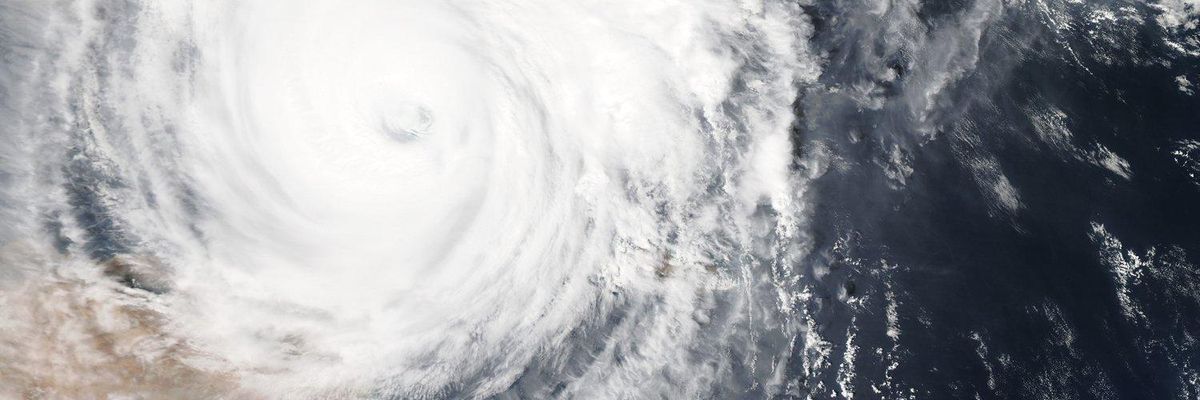The National Oceanic and Atmospheric Administration (NOAA) has just released its Atlantic hurricane season outlook for 2020, forecasting an above-average hurricane season with 13-19 named storms, of which 6-10 could turn into hurricanes. Of these hurricanes, 3-6 could become major. If the outlook projections materialize, 2020 would be the fifth year in a row with above-normal tropical cyclone activity. In addition, the NOAA outlook comes on the heels of the first named Atlantic tropical storm of the season, Arthur, which - for the sixth year in a row - formed before the official start of hurricane season, June 1.
The United States is reeling from the novel coronavirus pandemic, with over 1.5 million cases and roughly 93,500 deaths nationally as of this writing. The full economic and social impacts of both the disease and the measures to contain it are still not clear, as the situation is in constant flux, but we do know it will take a long time for people and the country to recover. And while there is increasing pressure for the states to reopen for the sake of the economy, and stay-at-home orders and other restrictions are being lifted, doing so too soon may lead to a fall second wave of the disease. While we cannot say what the situation of the pandemic will be in the coming months, we do know hurricane season is about to start and its risks will only grow and potentially compound any impacts from the pandemic.
The NOAA outlook mirrors the Colorado State University forecast released in April. Both base their predictions mainly on the absence of an El Nino throughout the summer, in addition to above-average tropical and subtropical sea surface temperatures. El Nino has been linked to increased westerly winds that prevent optimal conditions for hurricanes to form in the tropical Atlantic, while warmer-than-average sea surface waters act like fuel for hurricanes to gain strength, as warm waters bring with them more humidity and other conditions conducive to the formation of hurricanes.
Scientists have compared the conditions this year to those in 2005, when 28 storms developed in the Atlantic and Katrina made landfall, and believe that this could be the most dangerous season since then.
Climate change is making extreme weather events worse
There is definitive evidence that climate change is making hurricane seasons progressively worse, as I describe in a previous blog. If the past five hurricane seasons have taught us anything, it is that hurricanes are becoming stronger, wetter, slower, and more destructive, and all these trends have been linked to anthropogenic global warming.
A just-released study found that, in the period between 1979 and 2017, global warming increased the likelihood of a given tropical cyclone becoming a Category 3-5 by roughly 8 percent per decade. Hurricanes are also intensifying faster compared to historical records - we saw that with hurricanes Harvey (2017), Michael (2018), and Lorenzo (2019), and just this week with cyclone Amphan in the Bay of Bengal, located to the East of India.
A National Center for Atmospheric Research (NCAR) study also found that storms could reach farther inland with stronger winds and more rainfall. For these reasons alone, it is extremely important that hurricane preparedness takes into account the pandemic constraints and compound risks. The administration, federal agencies and local and state governments must have disaster relief plans and resources in place.
While hurricane season is upon us, flood, wildfires, and of course, it being summer, extreme heat also threaten to overtax federal disaster relief in the coming months. The NOAA running list of billion dollar disasters includes many instances of hurricanes, as well as wildfires, floods, storms, and other extreme weather events. With the potential for several of these disasters to happen simultaneously throughout hurricane season, the capacity for response if a hurricane hits may be significantly diminished.
Hurricanes and COVID-19 convergence
The map below is a view of the pandemic projections as of June 27th, early in hurricane season. Projections show that roughly 8.7 million people may be infected altogether in the states at risk of hurricane impacts if there is a 20 percent weekly reduction in social contact.
Highest risk for hurricanes is usually in states from the Mid-Atlantic coast down to Florida and along the Gulf coast to Texas. However, New England states are not completely out of the woods, as since 1938 seven hurricanes have made landfall in the region. New England and many inland states have also been impacted by hurricanes after landfall, especially due to extreme precipitation and floods, even if they've been downgraded to tropical storms.
As of the 2019 hurricane season, an estimated 7.2 million homes were at risk of storm surge damage in states along the Atlantic and Gulf coasts, with Florida, Texas and Louisiana topping the list, and numbers should be similar this year. NOAA estimated in 2010 that 39 percent of the U.S. population resided in coastal shoreline counties.
Map shows the difference in the number of COVID-19 cases between the scenario used for the Florida map below and one in which there's just the 20% weekly reduction-no increase in social contact in reopening counties. These are total number of cases rather than the confirmed number of cases. Data source: https://github.com/shaman-lab/COVID-19Projection
Florida is one of the most vulnerable states when it comes to hurricanes. A recent study by Florida Atlantic University (FAU) showed that 10 of its 67 counties - mostly in the Panhandle and including some of the hardest hit by hurricane Michael in 2018 - are woefully unprepared for hurricane season evacuations, especially one about to occur in the midst of a pandemic. When you add projections of coronavirus infections for those counties (see figure below), the picture is grim - and that is just one state. Being prepared for both hurricanes and COVID-19 is a tall order for any state, sure, but state priorities now need to be identifying and filling the most dangerous gaps in their preparedness, in light of compound risks and hazards.
Federal, state, and local disaster relief must be ready, as must communities
The Federal Emergency Management Agency (FEMA) is the agency in charge of COVID-19 response and recovery for all states and territories. It is also responsible for hurricane emergency preparedness, emergency response, and disaster recovery. The intersection of the pandemic with hurricane season is unprecedented and unfortunate, as it will play out as FEMA's resources and staff are stretched thin with the pandemic response and a series of disasters since 2017, which will make it harder for the agency to rise to the challenge of simultaneously occurring disasters. FEMA has prepared specific guidance for hurricane preparedness in a COVID-19 era, and its Administrator stated that they are planning for safe evacuation, protection of vulnerable segments of the population, and the possibility of other simultaneous disasters and compound risks, such as wildfires. Read more about hurricane and COVID-19 preparedness and response policies and solutions in my colleague Rachel Cleetus' blog.
COVID-19 may impact evacuation procedures
In addition to government assistance, we know people's socio-economic status contributes to disaster preparedness and recovery, as well as their ability to cope and make sound decisions. A project started 10 years after Katrina's landfall looked for long-term predictors of resilience, and found a range of factors that seem to help with resilience and recovery after a disaster: financial resources, yes, but also social and cultural ties, and access to stable housing after the event appeared to be important factors. Those are important to consider in an emergency, when a community is asked to evacuate, and also in their decision to return. After Katrina, many people relocated, particularly to the Houston area, but one study based on American Community Survey data found that one year after landfalling, roughly 53 percent of New Orleans adult residents were back, many to their original housing.
The various measures to limit movement in and across states add to those decisions: where could people go safely, if they can evacuate?
A scenario where many people don't evacuate at all is not out of the question either, as evacuating necessitates resources many may not have - transportation, lodging, money. Sheltering in place is also a resource-intensive endeavor, where people may see an increase in electricity bills, food consumption, and other expenses. How can people who have been laid off because of the COVID-19 crisis cope when they are low on cash?
We know Latinos and Blacks are becoming unemployed during the current economic crisis at higher rates than Whites and others, and many in these population segments are also harder hit by COVID-19. People of color and those struggling with low incomes are also historically hit differentially and harder by disaster such as hurricanes and floods, and the way relief is handled makes it more difficult for them to rebound.
Identification of those most vulnerable to these compound risks has to be an integral part of any disaster response plan--a lesson we should have learned from past disasters such as Katrina.
Over one million people were under evacuation orders as Hurricane Dorian approached the U.S. last year. Imagine one million people on the move right now, all trying to find safe shelter. Emergency response officials need to develop COVID-19-safe evacuation plans, with safe locations and enforced social distancing, taking into consideration those most vulnerable socially and economically. Communities should also learn about preparing now for this unique hurricane season, so that together, everyone comes out safe and well.



